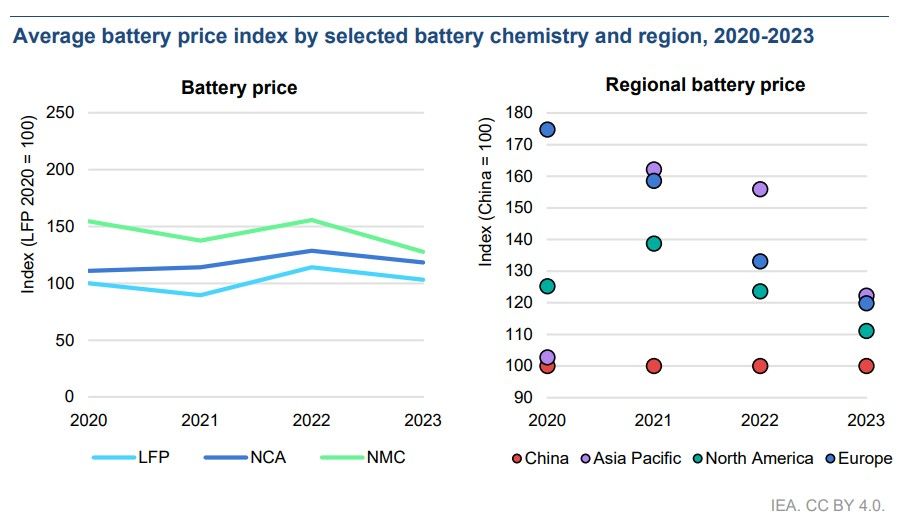The electric car will hurt oil a lot. According to the IEA’s Global Outlook just published, after a record-breaking 2023, global sales will be robust again this year, covering around 20% of the market. And they will continue to accelerate throughout the next decade.
The electric breakthrough is therefore destined to “rishape the industry global automotive industry” and the electric car will contribute to “reduce significantly the oil consumption for road transport“, we read in Global Outlook on EVs of the International Energy Agency, rightly considered the most complete and authoritative in the world. Which confirms the contents of the our recent article on the alleged and wrongly heralded “electric car bubble”.
However, it covers all types of vehicles, including trucks and two-wheelers. And it records market data, prices, origin of products, use, technical characteristics of finished vehicles and batteries. A mass of data impossible to synthesize.
The document estimates that global sales of electric cars will reach in 2024 quota 17 million, compared to around 14 million in 2023 (+35% on 2022). In the first quarterin fact, sales are increased by approximately 25% compared to the same period last year, a similar rate to the previous year. The number of electric cars sold in the first three months is more or less equivalent to the number sold in all of 2020.
Growth will be spectacular in China (around 10 million, with 45% of the entire car market). In the United States, about one in nine cars sold is expected to be electric, while in Europedespite the generally weak outlook for auto sales and the gradual elimination of subsidies in some countries, electrics are still expected to account for approx one in four sold.
In 2035, two out of three cars will be EVs
Substantial investments in the EV supply chain, continued policy support, and declining prices of EVs and their batteries will produce even faster growth in the years ahead.
So much so that the Outlook predicts that by 2035 two out of three cars sold in the world will be electric. In this scenario, the spread of electric cars will lead to a drop in consumption oil of about 12 million barrels per day, on the current hundred barrels/day. It is the equivalent of the combined transport consumption of China and Europe.
Battery prices down. But China…
«The continued momentum of electric cars is clear in our data, although it is stronger in some markets than others.”commented the director of the IEA Fatih Birol . And he added: «Instead of slowing down, the global electric vehicle revolution appears to be preparing for a new phase of growth. This change will have important consequences for both the automotive industry and the energy sector».

In China, more than 60% of cars sold in 2023 were electric already less expensive to purchase compared to lconventional gold equivalents. However, in Europe and in United Statesthe purchase prices of thermal cars they stayed in lower average, although intensifying market competition and improving battery technologies are expected to reduce prices in the coming years. Even where initial prices are high, i lower operating costs of electric vehicles mean that theinitial investment pays off over time.
But the growing car exports Chinese electric cars will determine one shock in the traditional automotive industry.
The columns? Multiply by six
Finally, according to the report, it is essential that the availability of public charging keep up with EV sales. The number of charging points installed globally is increased by 40% in 2023 and the growth of points of fast charging surpassed that of the slower ones. However charging networks must grow six-fold by 2035. This will lead to more electricity demand than could overload electricity grids if she were not accompanied by one of them strengthening.







